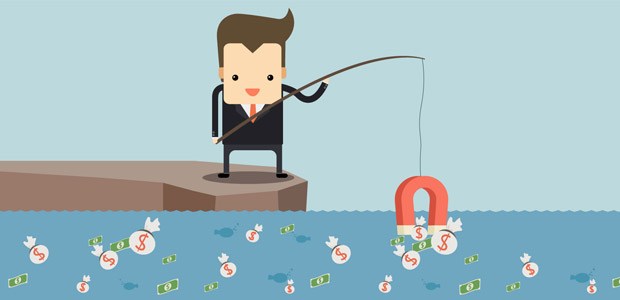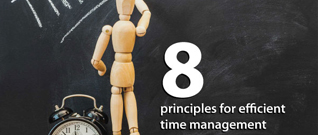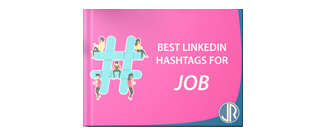5 steps to the secret of web lead generation
You have a website, maybe a blog, a bunch of Social Media channels, but so far it hasn't helped you much getting new business. What you need is your online tools to generate leads. How? Keep reading!

Technical terms
Before I could really dive deeper in this article, I will need to define a few terms.
Outbound / inbound marketing
Outbound marketing is the traditional approach to marketing - you create multichannel campaigns to reach your potential clients and try to convert them. For example, things like EDMs, TV, newspaper ads, Adwords, etc. fall under the "outbound" category.
Inbound marketing, on the other hand, relies on your ability to be found by people who search for products / services you offer. For example, having a great website, well indexed, that people can easily find through Google is part of inbound marketing.
Let's make it even simpler?
- Outbound = YOU find prospects
- Inbound = prospects find you
Landing pages
You certainly have a great website, SEO friendly, great on mobile, with beautiful pictures and clear content. Very well.
But what your website lacks is buyer personas (find out more about "How can buyer personas help you build a solid marketing strategy"). Your website talks to anyone, anytime, in any situation. It isn't specific to one problem / one territory /one type of prospect.
Landing pages, on the other hand, are independent pages that target ONE specific aspect of your business.
Let's take an example: you sell accounting services. Your website gives a list of all type of services you provide, the type of clients you cater, where you are based, pricing information, testimonials, etc.
If I represent an SME in the textile business that specifically needs help for the year-end audit preparation, I may find your website too generic. On the other hand, you may hook me with a landing page developed for ME, explaining the services you offer for SMEs that need help preparing their year-end audit.
This is what a landing page is all about - a page specifically developed to answer one problem for one buyer persona.
You can find out more about "Introduction to the unlimited power of landing pages".
Sales funnel
Sales funnel are essential, both for marketing and sales purposes.
A sales funnel is a way of categorizing prospects based on their current state-of-mind.
There are multiple stages in a sales funnel. You can find things such as "discovery phase" (the prospect understands the problem), "research phase" (the prospect analyses potential solutions), "product study" (the prospect compares products), "decision-making phase", etc.
It is called a funnel because you tend to lose people at each stage of the process. Sales funnel help you better understand your customer's journey and identify flaws in the process.
You can find more about "The unexpected prediction power of sales funnel".
Action plan
Now that you clearly understand the basic terms, let's get to business.
Your goal is to generate leads. To be clear, a "lead" is not a client. A lead is someone showing a keen interest that you will need to convert in order to get a new client.
Generating leads is done through an Inbound Strategy, using Landing Pages as well as a clear and customized Sales Funnel. Ready?

Step 1 - identify problems
This has to be the very first step of your strategy. You need to sit down and map out your current market.
You must identify all the problems your clients face that you can solve as well as all the buyer personas you have (or that exist but you haven't been able to reach yet).
Once you have this map, you must define what are the elements that makes sense for you to target, financially speaking (for example, if you sell accounting solutions, startups may be potential clients with specific problems, but they may represent too little money to be interesting for you to target - read "How to differentiate good customer from a bad one?")
The goal of this step is to identify a few (let's start with 3) problems and the buyer persona concerned.
 Anthony Rochand, Web Expert (Social Media Optimization) recommends:
Anthony Rochand, Web Expert (Social Media Optimization) recommends:
"In order to identify problems early on, you should write down your objectives:
- What ROI do you expect your marketing strategy to produce?
- Define precisely your objectives in terms of turnover. "
Step 2 - build landing pages
If you have completed step 1 correctly, you now have three sets of problem / buyer personas. Great.
Let's start with the first one. You know the problem, you now need to address it - find the two or three main USPs (Unique Selling Proposition) that make your product a great solution for that problem.
You can start building your page. Divide it into sections, starting with the problem, then the solution, then, your product, and finally your pricing.
A good landing page always starts by addressing the prospect's problem, for identification purposes. Then, it talks about solutions, to show that the problem is understood and there are ways to solve it. Finally, the product comes as a conclusion.
Remember that you have identified a specific buyer persona: you need to write your content to address this specific person, his needs, use his language, etc.
Go one step further with "Introduction to the art of A/B testing landing pages".
Step 3 - define your sales funnel
It is now time to define your sales funnel. Why is it important? Because you cannot treat everyone the same way and expect the same results!
Someone in discovery phase isn't ready to buy yet - he is only trying to better understand the problem and the solutions. You will need to do "lead nurturing" - basically provide him with additional information that help him understand the problem better, before you even mention your product.
A lead in the comparison phase, however, is ready to be converted. You can start applying sales methods to convert that prospect.
Once you have identified the various steps specific to your business or industry, you can define ways to identify your prospect's stage and strategies to deal with him.
 Anthony Rochand, Web Expert (Social Media Optimization) recommends:
Anthony Rochand, Web Expert (Social Media Optimization) recommends:
" To define your sales funnel, it is also necessary to ask yourself a few essential questions:
- know and understand your sales cycle
- estimate the number of prospects you could treat each month "
Step 4 - prepare your follow-up strategy
Based on the stage of your prospect, he may ask for a white paper, contact you, ask for a quote or even click the "buy now" button.
Since you have identified the different stages a prospect may be in and the right type of action for each of these stages, you now need to build the content and triggers around this.
If a prospect is in the discovery phase, feed him with a white paper that explains more and leads to the next phase of your funnel. Follow-up with an email a few days later driving him to the next step.
You need to use empathy to put yourself in your visitor's shoes and think about his expectations.
Step 5 - drive traffic to these pages
Alright, your entire strategy is in place, but you still miss one essential piece - how do you drive traffic to your pages?!
This is exactly why I suggested starting with three pages only: you must build and refine your strategy on your most essential targets first, then you can expand the strategy further.
There are two ways to drive traffic: through SEO or through referral.
SEO is great, free and long lasting, but it takes time to build. You will need to build links from your website, your blog, other partners, etc. It may take months before you see any impact. While you should definitely work on such strategy, don't wait and consider referral.
Referral can be free or paid, it all depends on your approach. Free referral could be done through Social Media: if your channels are well developed, you could use Social Media posts to drive targeted traffic to your landing pages. What works best, however, is paid ads: consider Google Adwords to target the buyer personas you identified earlier and direct them to your landing pages.
 Anthony Rochand, Web Expert (Social Media Optimization) recommends:
Anthony Rochand, Web Expert (Social Media Optimization) recommends:
" Your CTAs are part of your inbound strategy. To help increase conversions, you may consider adding landing pages, social media sharing buttons, welcome message, about-to-leave popup, etc. Other formats exist and it is for you to adapt the right solution to your specific blog or website. "
You can read more here: "Should I invest in SEM or SEO strategies?"

Need help?
You now have a pretty solid strategy to generate a steady stream of quality leads for your business. If you feel it is too overwhelming, don't know where to start or simply don't have the internal resources to execute such plan, contact me today to discuss your strategy and its implementation.
Last update: 2024-04-21 Tags: leads landing page sales funnel inbound

















 Français
Français English
English